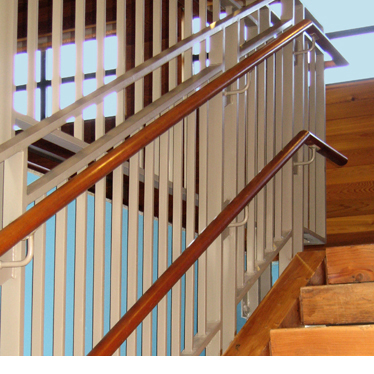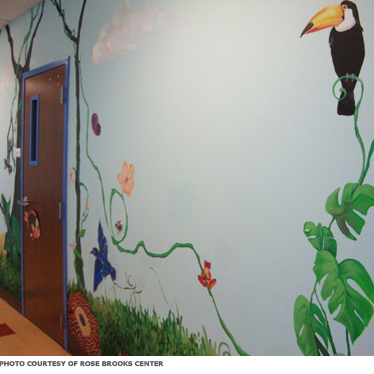Empower
Making one’s own decisions; reclaiming the autonomy and dignity eroded by abuse
Visual access throughout the building enhances autonomy.
Choosing when to interact and with whom is an essential component of self determination. Residents appreciate the ability to see who is in a communal space before entering it. Interior windows or cutouts and open sight lines can accomplish this.
At the same time clear visual access supports people who may be deaf, hearing impaired or use sign language to communicate.
Choosing when to interact and with whom is an essential component of self determination. Residents appreciate the ability to see who is in a communal space before entering it. Interior windows or cutouts and open sight lines can accomplish this.
At the same time clear visual access supports people who may be deaf, hearing impaired or use sign language to communicate.
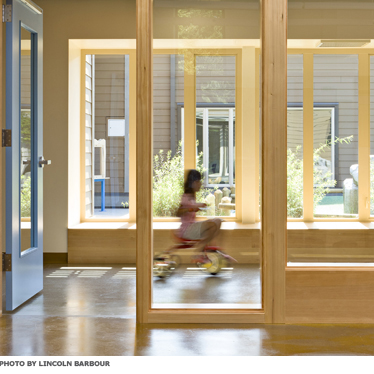
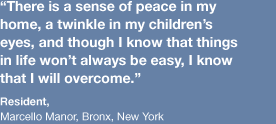
Quiet spaces outside residents’ rooms increase options for privacy.
In 1992, researchers interviewing advocates and shelter residents in King County found a need for “more privacy for shelter residents.” (Kerri Kumasaka and Gretchen Test, Culturally Competent Shelter Alternative Project, King County Women’s Programs, 1992, p. 4) In her 2008 multi state shelter study, Eleanor Lyon found at least 16% of residents noted a need for more privacy.
A second living room could be designated as a quiet room, with no TV, no stereo, only phone and comfortable furniture. In focus groups, the “quiet room” was identified as a favorite space by almost every adult and child in the shelter.
In 1992, researchers interviewing advocates and shelter residents in King County found a need for “more privacy for shelter residents.” (Kerri Kumasaka and Gretchen Test, Culturally Competent Shelter Alternative Project, King County Women’s Programs, 1992, p. 4) In her 2008 multi state shelter study, Eleanor Lyon found at least 16% of residents noted a need for more privacy.
A second living room could be designated as a quiet room, with no TV, no stereo, only phone and comfortable furniture. In focus groups, the “quiet room” was identified as a favorite space by almost every adult and child in the shelter.
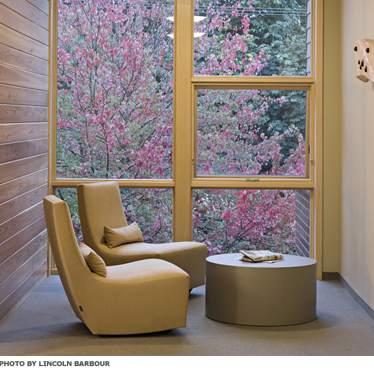
Alcoves allow residents to retreat from larger group situations.
Children in particular, but also adults love window seats, alcoves and other peripheral spaces that allow them to create their own space while also being connected to the larger, communal space.
Children in particular, but also adults love window seats, alcoves and other peripheral spaces that allow them to create their own space while also being connected to the larger, communal space.
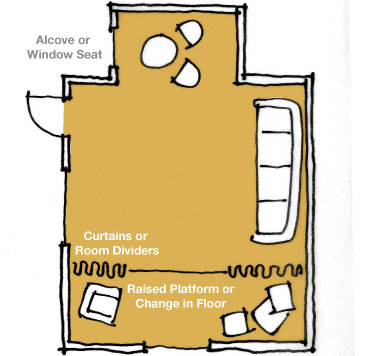
Make laundry easy.
The importance of this can’t be overstated! Because shelter residents are more likely to have young children, and larger families, their laundry needs are above average. Assume each adult in shelter will be washing, on average, one to two loads of laundry a day.
Laundry facilities in basements or garages pose challenges for residents with mobility problems or injuries, or residents who are required to bring their children along with them whenever they move about the building. When laundry facilities are remote from bedrooms, supervising children while doing laundry becomes a challenge.
Keep in mind that for program sustainability, laundry machines should be water and energy efficient.
The importance of this can’t be overstated! Because shelter residents are more likely to have young children, and larger families, their laundry needs are above average. Assume each adult in shelter will be washing, on average, one to two loads of laundry a day.
Laundry facilities in basements or garages pose challenges for residents with mobility problems or injuries, or residents who are required to bring their children along with them whenever they move about the building. When laundry facilities are remote from bedrooms, supervising children while doing laundry becomes a challenge.
Keep in mind that for program sustainability, laundry machines should be water and energy efficient.
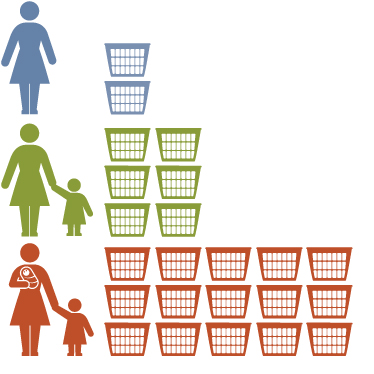
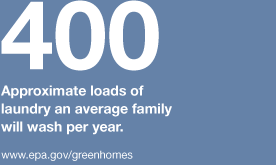
Library and information nooks allow residents to explore information, brochures and books in relative privacy.
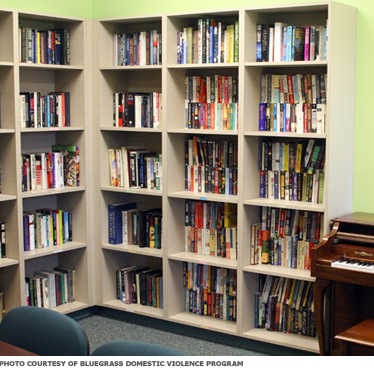

Residents have open access to the library at the Bluegrass Domestic Violence Program. The library includes books and information for adults and children.
Flexibility within communal spaces stimulates and encourages a variety of uses.
Incorporating “tools,” such as mobile storage and lightweight but durable furniture, encourages and empowers residents and staff to reconfigure and transform the space to support their needs. Color, the position of furniture and rugs, and lighting may be used to create boundaries within a larger room rather than creating multiple smaller rooms that ultimately limit future flexibility.
Incorporating “tools,” such as mobile storage and lightweight but durable furniture, encourages and empowers residents and staff to reconfigure and transform the space to support their needs. Color, the position of furniture and rugs, and lighting may be used to create boundaries within a larger room rather than creating multiple smaller rooms that ultimately limit future flexibility.
When living space is communal (ie, a shared living room) use furniture to create flexible use of the space. Parents and children need relatively distraction free “cozy” spaces to connect, cuddle, read or play a game. Rather than having every seat oriented towards one central focal point, small groupings may make more sense. However, if furniture is easily movable, communal areas can be transformed in to gathering space for support group or adult conversation.
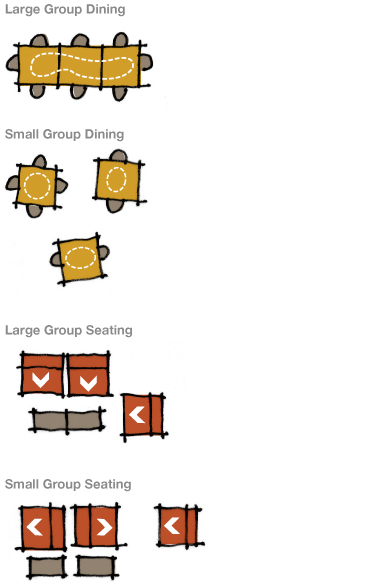
Comfortable and safe stair treads ease level changes.
Shelter populations often include people with injuries, back problems, and trouble balancing. Residents will often be carrying toddlers, and infants.
Stairs with 7-inch risers and 11-inch treads are generally considered acceptable but shallow risers and deeper treads provide more comfortable travel. Where possible, provide at least one intermittent landing between floors, with no more than 11 risers between landings.
Continuous handrails help residents with injuries due to violence, physical disabilities, or who are obese to negotiate level changes more safely. Include handrails at both adult and child height to allow children to use stairs safely. Handrails should be available on both sides of the stairs because people may have paralysis or lack of strength on one side of their body and need to use railing going both up and down the stairs.
In multi-story buildings, elevators are ideal because they increase accessibility and ease use.Refer to local building codes for specific regulations regarding stair, handrail, and guardrail design.
Refer to the Americans with Disabilities Act (ADA) for Standards for Accessible Design.
See Resources for more information.
Shelter populations often include people with injuries, back problems, and trouble balancing. Residents will often be carrying toddlers, and infants.
Stairs with 7-inch risers and 11-inch treads are generally considered acceptable but shallow risers and deeper treads provide more comfortable travel. Where possible, provide at least one intermittent landing between floors, with no more than 11 risers between landings.
Continuous handrails help residents with injuries due to violence, physical disabilities, or who are obese to negotiate level changes more safely. Include handrails at both adult and child height to allow children to use stairs safely. Handrails should be available on both sides of the stairs because people may have paralysis or lack of strength on one side of their body and need to use railing going both up and down the stairs.
In multi-story buildings, elevators are ideal because they increase accessibility and ease use.Refer to local building codes for specific regulations regarding stair, handrail, and guardrail design.
Refer to the Americans with Disabilities Act (ADA) for Standards for Accessible Design.
See Resources for more information.
